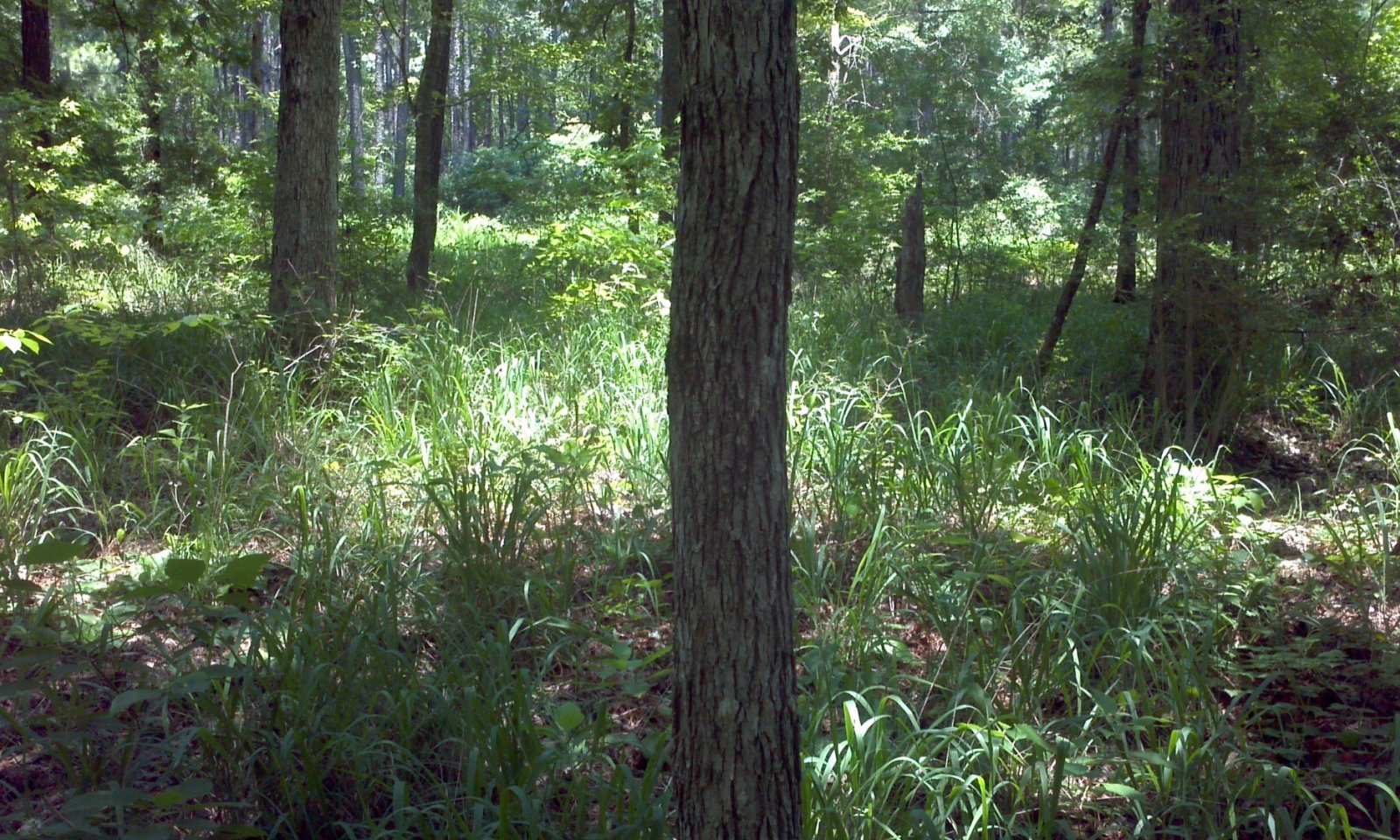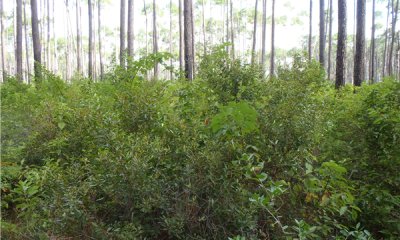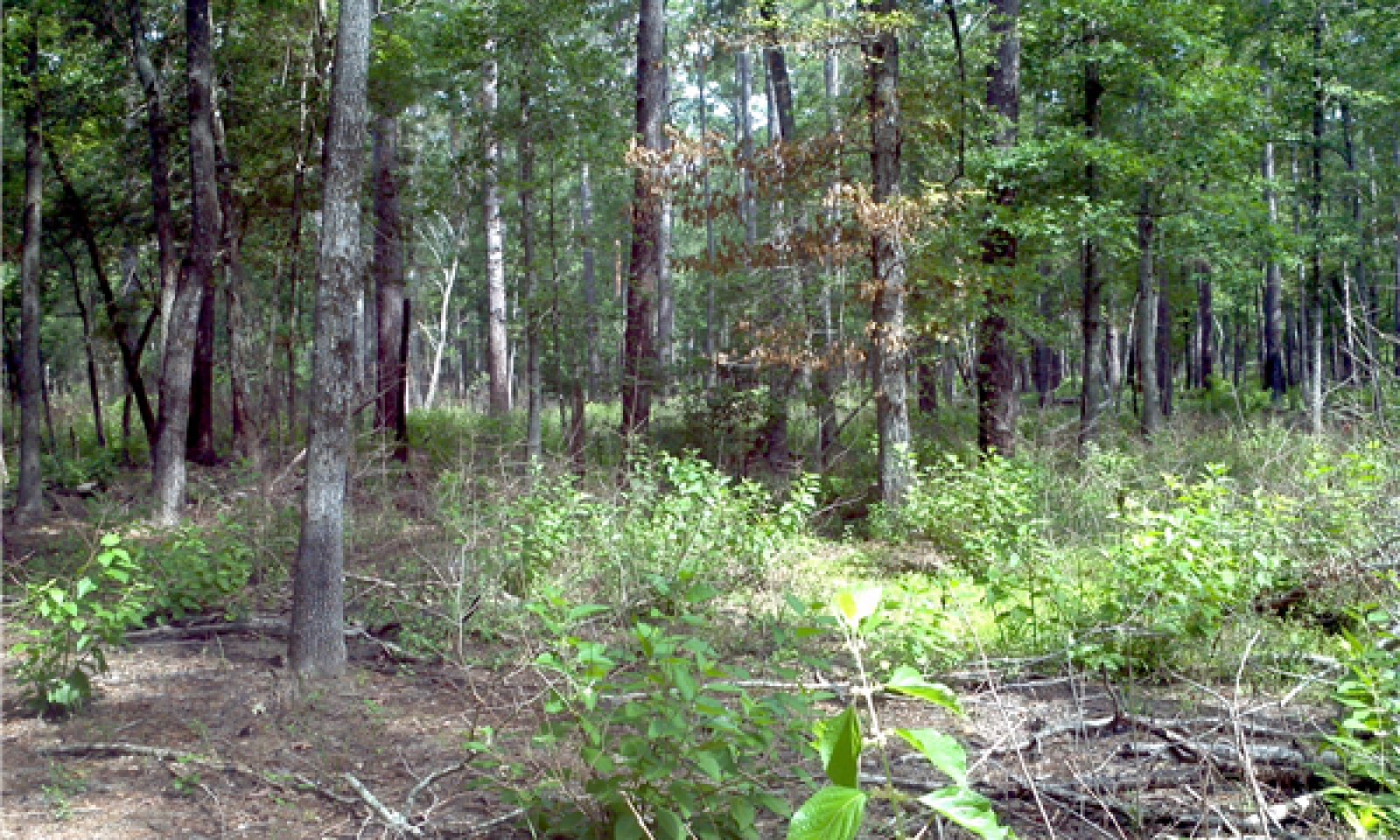
Terrace
Scenario model
Current ecosystem state
Select a state
Management practices/drivers
Select a transition or restoration pathway
-
Transition T1A
Fire suppression, no disturbance, high grading
More details -
Transition T1B
Clearcut, site preparation, tree planting
More details -
Transition T1C
Clearcut, grass/crop planting
More details -
Restoration pathway R2A
Selective timber harvest, timber stand improvement, site preparation, prescribed burns
More details -
Transition T2A
Fire suppression, no disturbance, high grading
More details -
Transition T2B
Clearcut, site preparation, tree planting
More details -
Transition T2C
Clearcut, grass/crop planting
More details -
Restoration pathway R3A
Selective timber harvest, mid-story shrub control, site preparation, tree planting, prescribed burns
More details -
Transition T3A
Clearcut, site preparation, tree planting
More details -
Transition T3B
Clearcut, grass/crop planting
More details -
Restoration pathway R4A
Gap-phase regeneration or clearcut with tree planting
More details -
Transition T4A
Fire suppression, no disturbance, high grading
More details -
Restoration pathway R5A
Tree planting, mid-story shrub control, prescribed burns
More details -
Transition T5A
Clearcut, site preparation, tree planting
More details -
No transition or restoration pathway between the selected states has been described
Target ecosystem state
Select a state
Description
Two community phases exist in the Forest State (1): White Oak/Loblolly Pine Forest Community (1.1) and the Shrub-dominated Community (1.2). State 1 has a moderate overstory cover (70 to 90 percent) of primarily mixed hardwood and pine species with white oak and loblolly pine being the most dominant. The landscape position of the Terraces cause an intermixed plant community to form. Terraces are regularly a transition between uplands and bottomland. Therefore, species occurring on both uplands and bottomlands exist on terraces. Also, micro-lows commonly develop on the flattest parts of the terrace supporting a slightly wetter plant community.
Natural disturbances of fires, lightning strikes, hurricanes (wind throw), ice events (rare), and beetle infestations maintain the uneven-age structure. The natural canopy spacing is kept intact by fires ranging from 10 to 20 years. Representative basal areas range from 70 to 100 square feet per acre. As the basal area of the site increases, canopy cover generally increases as well. Growth competition can be seen in the outer rings on trees in locations where the basal area exceeds 100 square feet per acre. With more trees occupying one site, the competition for light, water, and nutrients will cause the tree rings to be less thick (for example, ten rings per inch in a competitive environment compared to six rings per inch on a lower basal area site).
Submodel
Description
The understory has developed into a dense mid-story layer (4.5 to 13 feet) and crossed a threshold in which historic environmental events (i.e., fire) cannot transition the community back to the reference state (State 1). The mid-story canopy has become so thick, it greatly limits the productivity of the grass/forb-ground layer. The limited ground layer does not provide the same fine fuel to harbor a burn with the same effects as found in State 1.
Submodel
Description
A long-term lack of fire has now caused the plant community to cross two major thresholds from State 1, resulting in a very-closed canopy state. Fire intolerant hardwoods dominate the overstory. The overstory composition will be dominated by red oak, water oak, sweetgum, and hickory (Carya sp.).
Submodel
Description
The Plantation State is a result of conversion activities. The landowner has maximized silviculture production by planting a monoculture of tree species.
Submodel
Mechanism
The transition from State 1 to State 2 is a result of time and long periods (greater than 20 years) of no fire. Without fire to suppress shrubs and tree seedlings, biomass, and diversity is lost from the grass and forb layers of the system. The transition is also characterized by tree sapling’s bud zones escaping the height at which fire effectively suppresses shade-tolerant, fire-intolerant species. High-grading of timber will also cause a shift.
Mechanism
The transition is because of the land manager maximizing silviculture potential. Merchantable timber is harvested by clearcut, then the site is prepared and planted to a monoculture of trees.
Mechanism
The transition is because of the land manager converting to agricultural production. Merchantable timber is harvested by clearcut, then the site is prepared and planted to either a planted grass for grazing livestock or row crops for food and fiber.
Mechanism
The driver for restoration is fire. Enough fuel is still left in this community to carry a fire through the site with intensity to kill young saplings. More frequent burns (3 to 5 years) may be required, initially, to suppress the woody vegetation. Some tree species may have escaped the effective fire height and will have to be selectively cut down to return to State 1. Herbicides can assist in deterring some hardwoods/unwanted species from growing. Care must be taken that non-target plants are not affected by the chemicals.
Mechanism
The transition from a State 2 to State 3 is a result of time and long periods (greater than 20 years) of no fire. Without fire to maintain the open spacing, the overstory becomes densely populated. The overstory is so saturated that the understory herbaceous layer is almost non-existent because of a lack of sunlight. As the overstory canopy closes, the established mid-story lessens in density. This begins to occur at overstory canopies greater than 90 percent. High-grading of timber will also cause a shift.
Mechanism
The transition is because of the land manager maximizing silviculture potential. Merchantable timber is harvested by clearcut, then the site is prepared and planted to a monoculture of trees.
Mechanism
The transition is because of the land manager converting to agricultural production. Merchantable timber is harvested by clearcut, then the site is prepared and planted to either a planted grass for grazing livestock or row crops for food and fiber.
Mechanism
Among all restoration pathways, this path is the most energy intensive. Restoration of this community to State 1 begins with a selective timber harvest. Removing unwanted trees (shade and fire intolerant) opens up the canopy, allowing sunlight penetration to the ground. Years of overstory growth have limited the fuel necessary to have an effective fire. Time will be needed to encourage an understory and, if possible, mowing the understory may help. Once the herbaceous layer has established, frequent burns (3 to 5 years) may be required to suppress the woody vegetation. If no white oak or loblolly pine seed source is available on nearby ecological sites, planting will be needed.
Mechanism
The transition is because of the land manager maximizing silviculture potential. Merchantable timber is harvested by clearcut, prepared, and planted to a monoculture of trees.
Mechanism
The transition is because of the land manager maximizing agricultural production. Merchantable timber is harvested by clearcut, then the site is prepared and planted to either an improved grass or row crops.
Mechanism
This restoration pathway can be accomplished in different ways depending on goals. One option is to create canopy openings by reducing the number of overstory trees. Then, restore the resulting canopy gaps with species from State 1's understory. Restoring the understory may include replanting trees. This method keeps the woodland structure intact and slowly changes the species composition.
Another restoration method is to selectively harvest and remove brush (via mechanical or chemical means) followed by re-planting loblolly pine and oak species (using reduced planting rates.) The herbaceous understory will take time to develop, but this process can be expedited if adapted plant material is available. Fire is the best option to maintain desired canopy cover for enhancement of the understory, and reduce undesirable woody species. Initially, fire frequencies of 3 to 5 years during both growing and cool seasons may be desired in order to maintain an open canopy and reduce undesirable plant competition. If fire is not a viable option, management of woody encroachment can be controlled by mowing or the use of herbicides.
Mechanism
This community transition is caused by neglecting the plantation understory. Without mowing or herbicides, the brush canopy becomes a dense thicket.
Mechanism
This restoration path can be accomplished by planting a mix of loblolly pine and white oak species to their natural frequencies (see State 1 Overstory Composition table), trying to attain a 60 to 80 percent mature overstory canopy. Management will be required to control unwanted species by burning, mowing, and/or herbicides. Controlling introduced pasture grasses is difficult, with complete control likely not attainable. The herbaceous understory will take time to develop, but this process can be expedited if adapted plant material seed is available.
Model keys
Briefcase
Add ecological sites and Major Land Resource Areas to your briefcase by clicking on the briefcase (![]() ) icon wherever it occurs. Drag and drop items to reorder. Cookies are used to store briefcase items between browsing sessions. Because of this, the number of items that can be added to your briefcase is limited, and briefcase items added on one device and browser cannot be accessed from another device or browser. Users who do not wish to place cookies on their devices should not use the briefcase tool. Briefcase cookies serve no other purpose than described here and are deleted whenever browsing history is cleared.
) icon wherever it occurs. Drag and drop items to reorder. Cookies are used to store briefcase items between browsing sessions. Because of this, the number of items that can be added to your briefcase is limited, and briefcase items added on one device and browser cannot be accessed from another device or browser. Users who do not wish to place cookies on their devices should not use the briefcase tool. Briefcase cookies serve no other purpose than described here and are deleted whenever browsing history is cleared.
Ecological sites
Major Land Resource Areas
The Ecosystem Dynamics Interpretive Tool is an information system framework developed by the USDA-ARS Jornada Experimental Range, USDA Natural Resources Conservation Service, and New Mexico State University.






